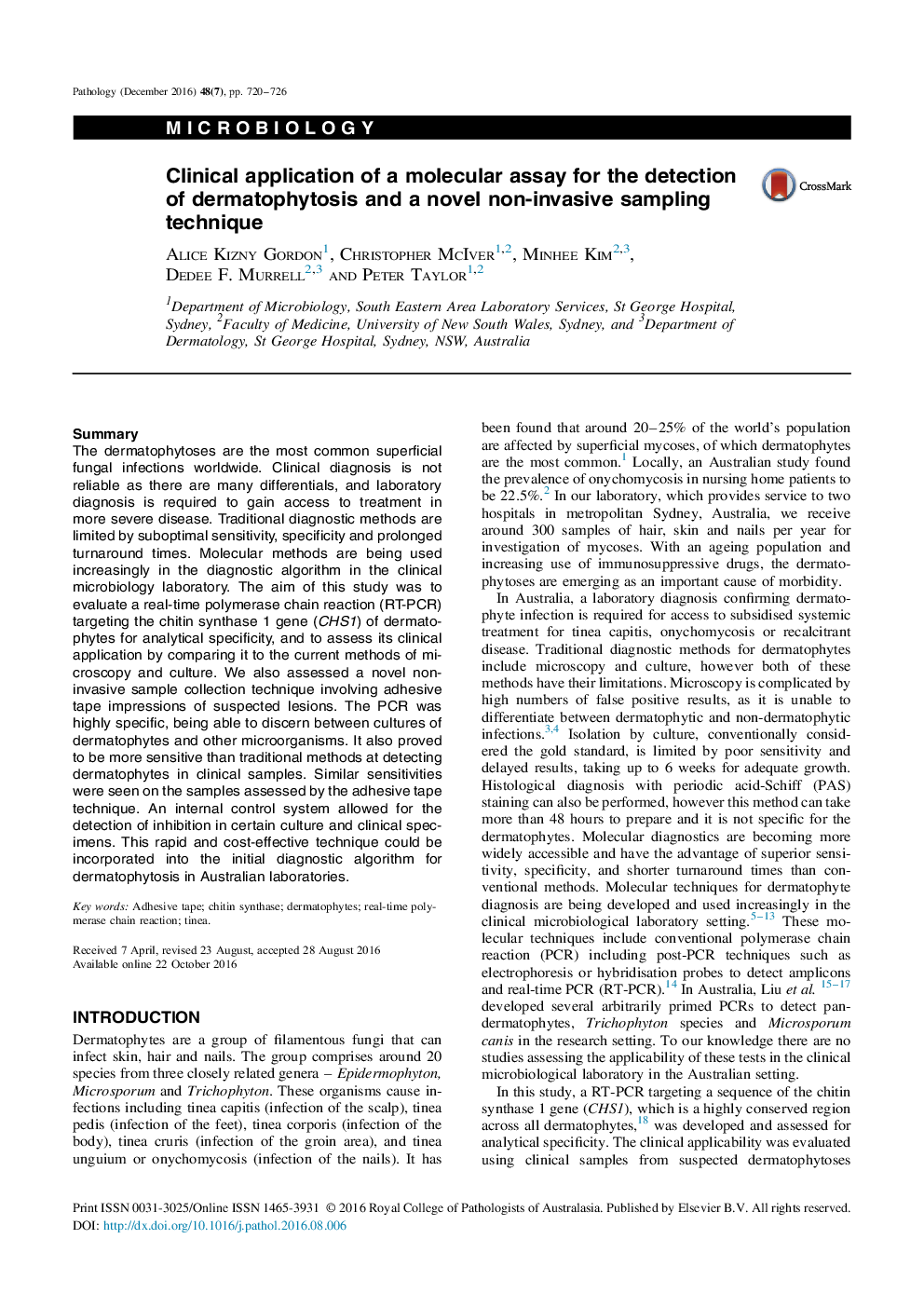| Article ID | Journal | Published Year | Pages | File Type |
|---|---|---|---|---|
| 6463265 | Pathology | 2016 | 7 Pages |
SummaryThe dermatophytoses are the most common superficial fungal infections worldwide. Clinical diagnosis is not reliable as there are many differentials, and laboratory diagnosis is required to gain access to treatment in more severe disease. Traditional diagnostic methods are limited by suboptimal sensitivity, specificity and prolonged turnaround times. Molecular methods are being used increasingly in the diagnostic algorithm in the clinical microbiology laboratory. The aim of this study was to evaluate a real-time polymerase chain reaction (RT-PCR) targeting the chitin synthase 1 gene (CHS1) of dermatophytes for analytical specificity, and to assess its clinical application by comparing it to the current methods of microscopy and culture. We also assessed a novel non-invasive sample collection technique involving adhesive tape impressions of suspected lesions. The PCR was highly specific, being able to discern between cultures of dermatophytes and other microorganisms. It also proved to be more sensitive than traditional methods at detecting dermatophytes in clinical samples. Similar sensitivities were seen on the samples assessed by the adhesive tape technique. An internal control system allowed for the detection of inhibition in certain culture and clinical specimens. This rapid and cost-effective technique could be incorporated into the initial diagnostic algorithm for dermatophytosis in Australian laboratories.
